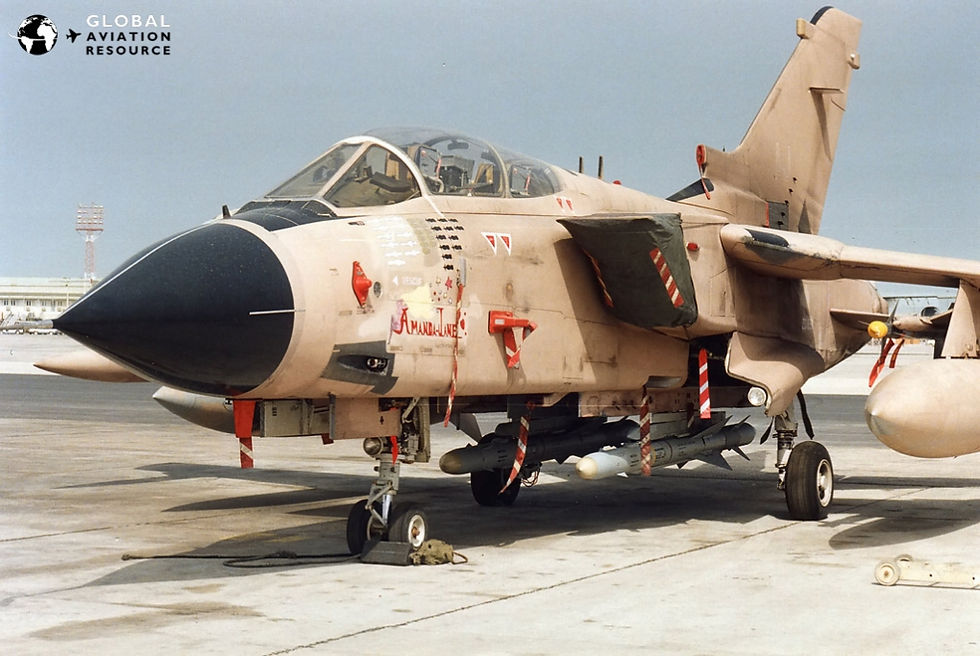Samuel Hollins | Lancaster University
Described in striking clarity, John Nichol’s Tornado: In the Eye of the Storm is at once both an anxiety-inducing account of aerial warfare during the First Gulf War (1990-1991) and a window into the war’s impact on real humans. Despite being a key character in the events in question, Nichol opts to tell the story from a detached perspective, amalgamating his own lived experiences with those of his fellow flyers and their families. In doing so, this book manages to deftly describe the broader experiences of those Britons closest to the conflict. A former Gulf War Tornado navigator, Nichol, and his pilot, John Peters, were shot down and captured by Iraqi forces. As such, his decision to write Tornado from a range of different perspectives without unbalanced weight on his own is praiseworthy. Yet, owing to Nichol’s lived experience, the account excels not only in the breadth of its coverage but also in its depth, detail, and authenticity. There is perhaps no better person to tell this story.

Presumably the genesis of the book’s subtitle and cover art, Nichol devotes a fair amount of time to detailing the low-level bombing sorties flown by the Royal Air Force’s Tornado squadrons during the war. In order to prevent Iraqi jets from taking off and guarantee allied air superiority, these sorties saw Tornado crews flying at exceptionally low levels. Often below 200ft to avoid radar detection and surface to air missiles, these Tornadoes raced across Iraqi deserts at incredible speeds to deliver a variety of guided and unguided munitions directly onto airfields. The Tornado had been designed and optimised for this task, yet Nichol leaves us in no doubt as to the extreme risk, difficulty, and skill associated with these sorties.

It is also fascinating to read about how other allied personnel, even American fast jet pilots, viewed their British counterparts’ extremely taxing and dangerous low-level escapades. The spectacularly horrifying walls of tracer fire through which these aircraft flew to reach their targets are viscerally described. Perhaps a cliché to note, but regardless, in reading Nichol’s description of the storms of lead these Tornados blasted through, the reader is likely to be left wincing at the sheer absurdity of war. So detached from our everyday comfort, the lives of fast jet pilots, especially those performing low-level attacking runs, are ones few could live and even fewer could excel at.

Despite the sharp clarity achieved in his descriptions of Tornado sorties, it is in his description of Tornado crew prisoners of war (POW) that Nichol leaves the strongest impression. From vicious beatings and inclusion in Saddam Hussein’s propaganda machine to feelings of immense shame at answering torturers’ questions, the Tornado POW’s experience is told with great care. Torture occupies a uniquely horrifying corner of warfare’s already ghastly closet. International law strictly forbids the exact treatment Nichol, and his fellow POWs suffered. Paraded on television and broadcast globally, Nichol and his fellow flyers became not only combatants, POWs, and victims but also tools of Saddam’s regime. Nichol’s decision to discuss his brutal captivity by intertwining it with the similar experiences of his comrades reflects a palpable sense of brotherhood and the existence of a shared experience. However, in moments, we are very carefully and deliberately reminded that wars are fought on both sides by humans. When an Iraqi doctor slips painkillers to a Tornado POW after a vicious beating despite the genuine risk to her own life, the account becomes all the more real. When Iraqi soldiers slap and jeer at POWs in transit, we are made cognizant of the frustrations, fears, and traumas they, as people and not amorphous enemies, are experiencing.
If Nichol’s goal was to convey the horrors of war, the anxieties of fast jet flying, the suffering of military families, and the intractability of morality during war, he has succeeded with flying colours. Equally, if his goal was to remind us that there exists hope, courage, and kindness even in war’s darkest moments, he succeeds. Tornado: In the Eye of the Storm is easy to recommend, especially to those interested in aviation, military history, and conduct in war
Samuel Hollins is a second-year PhD candidate in Lancaster University’s History Department. His PhD, which is AHRC funded and in collaboration with the Royal Air Force Museum, explores Britain's political, strategic, and economic rationale in the 1960s and 1970s. Samuel is also the Coordinating Editor for EPOCH History Magazine and has worked for the UK MOD, contributing to the incoming seventh edition of its Global Strategic Trends publication. Samuel holds memberships of the Centre for War and Diplomacy and the Royal Air Force Historical Society. Samuel has recently been awarded the Henry Probert Bursary by the RAF Historical Society and taken up the role of Institutional Ambassador for the British Society for the History of Science.
Twitter: @SamuelHollins5



